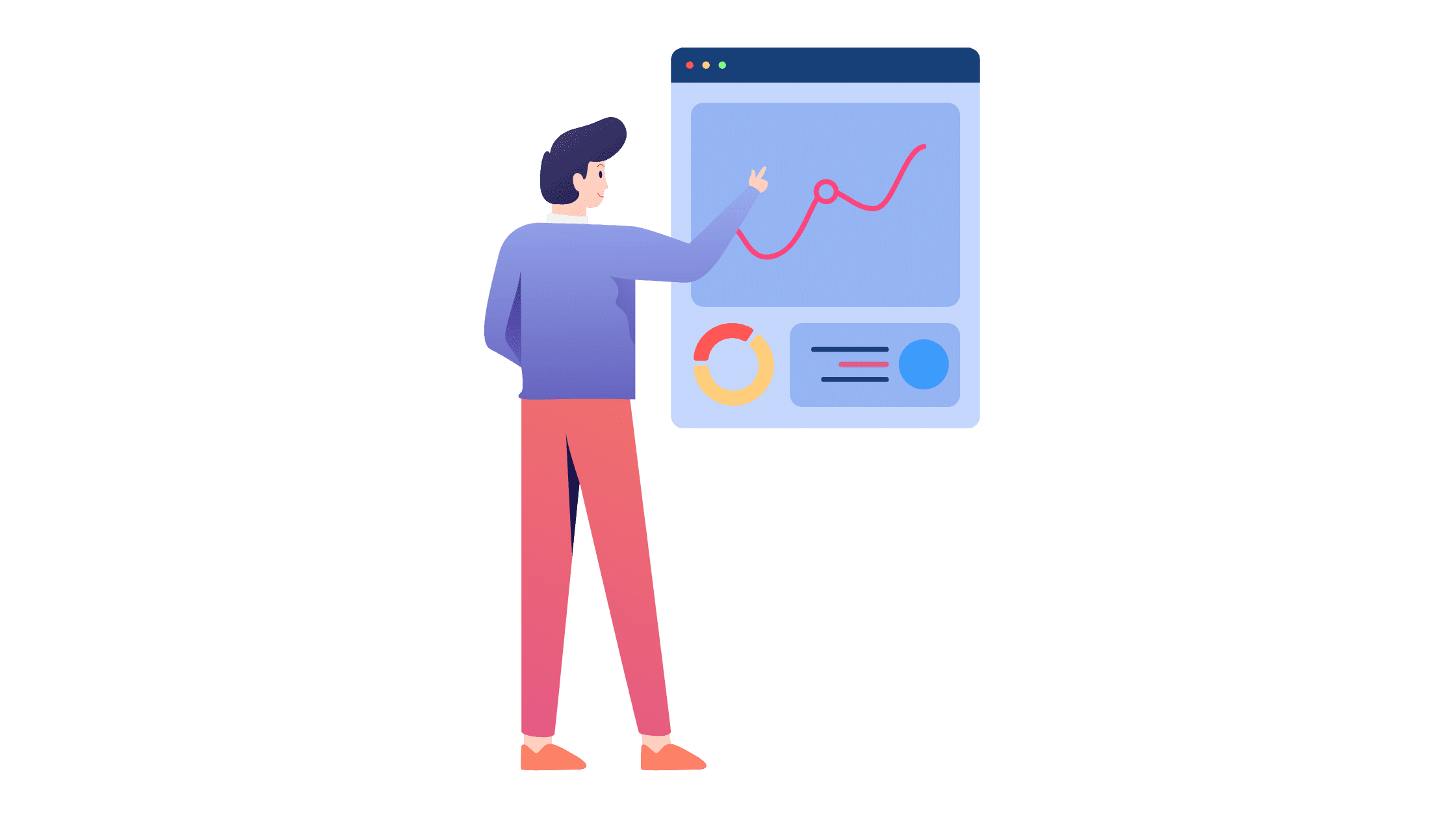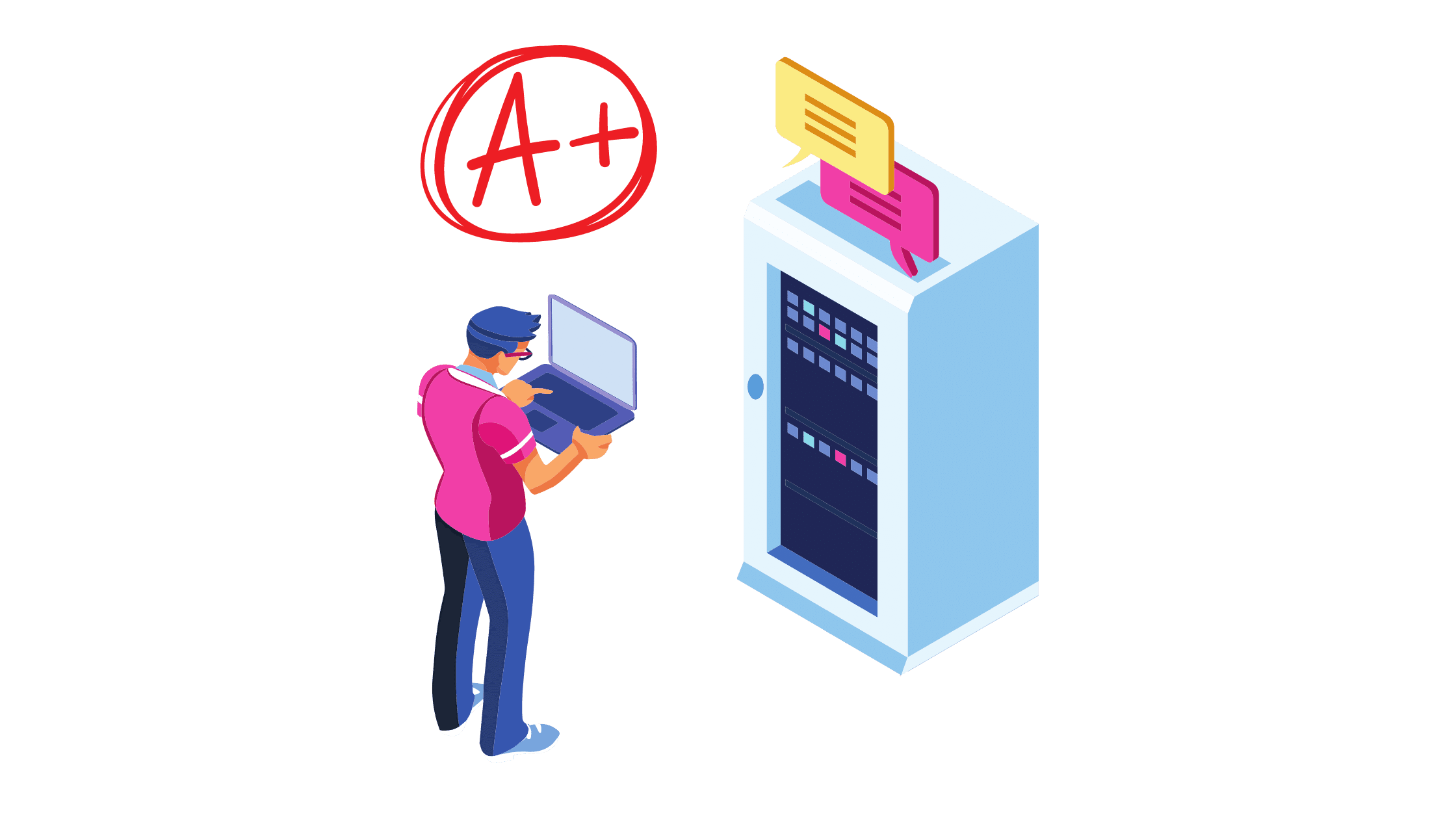Disclosure: Some of the links below are affiliate links, meaning that at no additional cost to you, I will receive a commission if you click through and make a purchase. Read our full affiliate disclosure here.
A
Affiliate Marketing

Affiliate marketing is an online sales tactic that lets a product owner increase sales by allowing others targeting the same audience—“affiliates”—to earn a commission by recommending the product to others. At the same time, it makes it possible for affiliates to earn money on product sales without creating products of their own. Affiliate sales are often a large portion of the money earned by bloggers and are a key pillar of blog monetization.

Alt Text

Alt text is that it is a description of a visual element, usually a photo. It adds context and describes in words what an image depicts.
Although primarily intended as a way of making the internet more inclusive to those that are visually impaired, many bloggers use the alt text strategically, to help their images rank.
Analytics

Analytics are the pieces of information and data that’s gathered to evaluate the performance of your blog and better understand who your readers are, what they’re doing and how you can better serve them. The leader in website analytics (Google Marketing Platform) is powered by data from Google Analytics, which allows bloggers to measure how much traffic their blog is getting and where those readers are coming from, along with other essentials like your advertising ROI from any Google ad spend.
B
Backlink

To a large degree, your backlink profile is made up of backlinks from external sites (also known as referring domains) that contribute to the overall strength, relevance and diversity of your domain’s backlink profile. The total number of backlinks can often include many links from the same referring domain or multiple referring domains.
Blog

A blog (a shortened version of “weblog”) is an online journal or informational website displaying information in reverse chronological order, with the latest posts appearing first, at the top. It is a platform where a writer or a group of writers share their views on an individual subject. While blogs can be written purely as a hobby, many bloggers earn significant amounts of money through blogging and view it as a business. There are a number of ways to monetize your blog, with some of the most common being the use of a blog ad network, affiliate marketing, or the sale of information products.
Blog Banner
A blog banner is the featured image located in the header of a blog post. These designs can be either static or animated images. Although blog posts are often best known for their detailed written analysis, a blog banner is one of the first prompts a reader to click on a post at all. As a result, many bloggers spend a significant amount of time creating unique images representing the themes or titles of their blogs in a creative visual format.
Bounce Rate

Bounce rate is defined as the percentage of visitors that leave a webpage without taking an action, such as clicking on a link, filling out a form, or making a purchase. Someone that bounces from your site (obviously) didn’t convert. So when you stop a visitor from bouncing, you can also increase your conversion rate.
C
Call to Action (CTA)

A call to action (CTA) is a prompt on a website that tells the user to take some specified action. A call to action is typically written as a command or action phrase, such as ‘Sign Up’ or ‘Buy Now’ and generally takes the form of a button or hyperlink. In digital marketing this can take the form of the text on a button (a CTA button) or a web link and in email campaigns CTAs are often links to a web page where the user can take further action.
Click Through Rate (CTR)

Click-through rate (CTR) is measurement of how many people clicked on a particular link. You can measure CTR on your website based on the number of visitors. Bloggers can also use CTR in email marketing to measure people who clicked on a link within your email.
Content Management System (CMS)

A content management system, often abbreviated as CMS, is software that helps users create, manage, and modify content on a website without the need for specialized technical knowledge.
In simpler language, a content management system is a tool that helps you build a website without needing to write all the code from scratch (or even know how to code at all).
WordPress is the most popular, content management system, commanding a 40% market share on websites with a known content management system. Another option would be Ghost, which offers some more robust features if you want to integrate features like paid memberships, subscription newsletters, and selling courses.
Content Marketing

Content marketing is a strategic marketing approach focused on creating and distributing valuable, relevant, and consistent content to attract and retain a clearly defined audience — and, ultimately, to drive profitable customer action. Instead of pitching your products or services, you are providing truly relevant and useful content to your prospects and customers to help them solve their issues.
Crank N Bank

Crank N’ Bank is a content strategy that involves publishing high volumes of content, targeting very low competition keywords. This strategy involves producing large amounts of content (either yourself or through the outsourcing of blog content). The advantages of this approach to content production are that there are a near infinite amount of longtail keyword search queries to target. And once you rank for these topics, your article will typically maintain its position in Google because higher authority sites are less likely to target these low volume searches.
D
Digital Publishing

Digital publishing includes the digital publication of e-books, digital magazines, and the development of digital libraries and catalogues. It also includes an editorial aspect, that consists of editing books, journals or magazines that are mostly destined to be read on a screen (computer, e-reader, tablet, smartphone).
Do-Follow Links

Do-follow is an HTML code used to give search engines permission to ‘crawl’ certain links. In the blogging community, it’s also known as ‘link juice’.
Do-Follow links are highly prized, especially when they come from a high authority website.
Domain Authority

DA (Domain Authority) is a score developed by Moz that seeks to put a number on how much authority a website has. A website with a lot of high-quality backlinks will have a high DA, whilst a website with few backlinks and/or lower quality backlinks will have a low DA.
Domain Authority is calculated on a logarithmic scale of 1 to 100. The mathematical nature of these scales means that it is exponentially harder to move from 80 to 81 than it is to move from 10 to 11.
It can be extremely tough to increase your website’s domain authority once your score is over 50. This typically involves obtaining high quality backlinks from high DA websites (whether through deliberate backlinking strategies or through organic link building).
E
Evergreen Content

Evergreen content is website content that is not tied to a particular date/season, is always relevant and does not go out of date. To perform well in search engine results, a website needs to have plenty of evergreen content
Editorial Calendar

An editorial calendar, also called a publishing schedule, helps in the planning and publication of different types of content. As it relates to blogging, an editorial calendar makes it possible to co-ordinate the entire content creation and publishing process over a period of time.
Email List Portability

Email list portability refers to the ability to transfer your email list and the associated subscriber data, from one email marketing system to another. Email list portability is a constant concern for bloggers who rely upon third party platforms, which vary in the level of access that they give you to your subscribers’ information.
F
Followers

A follower is a person who follows the opinions, ideas, beliefs, and teachings of another. In social media, a follower is someone who has subscribed to an account in order to receive all the updates.
It refers to a user who consciously chooses to see all the posts of another user in their newsfeed. Getting followers is one of the main goals of online businesses that are active on social media.
Instagram, Twitter, LinkedIn, and Facebook all have a type of newsfeed that delivers content for users. These news feeds mainly consist of posts, images, videos, and articles from different people that the users have chosen to follow.
G
Guest Post

A Guest Post is a an article written and posted on someone else’s blog. When you write something on your own blog its just a “post”, but on someone else’s blog the writer is a ‘guest’. Guest posts are valuable tools for reputation marketing for a number reasons like getting your brand mentioned or occupying branded search query results. But most people use them to embed backlinks.
H
Headline

A headline is the main title or caption of a blog post or article, typically displayed prominently at the top of the page.
Hyperlink

Hyperlink is used synonymously with the word “link,” this is clickable content within a web page that takes the user to another page, website, or within part of the same page. The text that comprises the hyperlink is referred to as the anchor text.
Host

Host (also known as web hosting) is the company that gives you the space to house your website and maintain your files. For example, Bluehost is the go to hosting service that most bloggers use for their websites.
I
Indexing

Indexing is the process by which search engines find your content and then make it available to users by storing it and displaying it in search results. To know whether or not your content has been indexed simply do a search for a page and if a search engine returns your page then it has indeed been indexed.
Infographic

An infographic (or information graphic) is a visual representation of information or data. But the meaning of an infographic is something much more specific. An infographic is a collection of imagery, charts, and minimal text that gives an easy-to-understand overview of a topic. Infographics can be created easily using free graphic design tools like Canva.
K
Keyword

In the context of blogging, a keyword is a specific word or phrase that is used to describe the main topic or focus of a blog post or webpage. Keywords are typically used in blog titles, headlines, and throughout the content of a blog post, and are chosen based on their relevance and popularity in relation to the topic being covered.
Keywords play a crucial role in SEO, as they help search engines understand the content and context of a blog post, and determine how relevant it is to a particular search query. By using targeted and relevant keywords in their blog posts, bloggers can help their content rank higher in search results and attract more organic traffic.
Keyword Density

Keyword density refers to the frequency with which a particular keyword or phrase appears in the content of a webpage or blog post. In the context of blogging, keyword density is often used as a measure of the relevance and focus of a piece of content to a particular topic or keyword.
Keyword density is typically expressed as a percentage, calculated by dividing the number of times a keyword appears in a piece of content by the total number of words in the content and multiplying by 100. For example, if a keyword appears 10 times in a 1000-word blog post, the keyword density would be 1%.
While keyword density can be an important factor in SEO, it’s important to keep in mind that keyword stuffing, or the practice of artificially inflating the density of a particular keyword in order to manipulate search rankings, is not only ineffective, but can also be penalized by search engines. It’s generally recommended to aim for a keyword density of around 1-2% for most content, although this may vary depending on the length and nature of the content.
Keyword Research

Keyword research is the process of discovering valuable search queries that your target customers type into search engines like Google to look for products, services, and information. Keyword research helps you ensure that there is a search demand for whatever you want to write about. Thus, if your page ends up ranking well in Google for its target keyword, you’ll be enjoying a consistent stream of highly targeted visitors to it.
L
Lead Magnet

A lead magnet is an incentive that marketers offer to potential buyers in exchange for their email address or other contact information. Lead magnets usually offer a piece of digital, downloadable content, such as a free PDF checklist, report, eBook, whitepaper, video, etc.
Long-Tail Keywords
Long-tail keywords are more targeted search phrases with 3 or more words. A long-tail keyword contains the more generic “head” keyword, but it also contains a few extra words that make it more targeted to a specific group of audience.
For example, “books” is a very generic head keyword. It may have a lot of searches, but it isn’t targeted.
On the other hand, “best romance books for women” is a long-tail keyword that is catering to a very specific group of audiences, i.e. women looking for the best romance books.
Link Building
Link building is the process of acquiring hyperlinks from other websites to your own. A hyperlink (usually just called a link) is a way for users to navigate between pages on the Internet. Search engines use links to crawl the web. They will crawl the links between the individual pages on your website, and they will crawl the links between entire websites.
M
Meta Description

A meta description (sometimes called a meta description attribute or tag) is an HTML element that describes and summarizes the contents of your page for the benefit of users and search engines. While meta data isn’t as important for SEO rankings as it used to be, the meta description still plays a significant role in on-page SEO.
Monetization

Monetization refers to the process of turning a non-revenue-generating item into cash. In many cases, monetization looks to novel methods of creating income from new sources; for instance, placing display ads on your blog or publishing your newsletter behind a paywall to monetize your newsletter content.
N
Newsletter

A newsletter is a letter that contains the news. In a more sophisticated manner, an email newsletter is a type of email used in email marketing campaigns. It informs the subscribers about the latest content (news, blogs, product reviews, announcements, and other similar stuff) on your website.
Newsletters, like those created on Substack, are almost always informational in nature. The goal is not to sell something, but to provide valuable information that people are willing to pay for. For example, you might have a newsletter where you make stock and investing recommendations. If your information is good and can help others make money, then people will be more than willing to pay for it.
Niche Website

A niche site is a blog or website that focuses on a specific topic or subject matter, targeting a specific audience or market.
O
Organic Traffic

Organic traffic is the primary channel that inbound marketing strives to increase. This traffic is defined as visitors coming from a search engine, such as Google or Bing. This does not include paid search ads, but that doesn’t mean organic traffic isn’t impacted by paid search or display advertising, either positively or negatively. In general, people trust search engines, and sayings such as “just Google it” reinforce that humans are tied to the search engine. Thus, paid search, display, or even offline campaigns can drive searches, which may increase organic traffic while those campaigns are running.
Off Page SEO
Off-page SEO (also called “off-site SEO”) refers to actions taken outside of your own website to impact your rankings within search engine results pages (SERPs).
Optimizing for off-site ranking factors involves improving search engine and user perception of a site’s popularity, relevance, trustworthiness, and authority. This is accomplished by other reputable places on the Internet (pages, sites, people, etc.) linking to or promoting your website, and effectively “vouching” for the quality of your content.
On-Page SEO
On-Page-SEO refers to all measures that can be taken directly within the website in order to improve its position in the search rankings.
Effective onpage optimization requires a combination of several factors. Two key things to have in place if you intend to improve your performance in a structured way are analysis and regular monitoring. There is little benefit in optimizing the structure or content of a website if the process isn’t geared towards achieving goals and isn’t built on a detailed assessment of the underlying issues.
P
Permalink

A permalink or permanent link is a URL that is intended to remain unchanged for many years into the future, yielding a hyperlink that is less susceptible to link rot.
Pay Per Click (PPC)

PPC stands for pay-per-click, a model of internet marketing in which advertisers pay a fee each time one of their ads is clicked. Essentially, it’s a way of buying visits to your site, rather than attempting to “earn” those visits organically.
Search engine advertising is one of the most popular forms of PPC. It allows advertisers to bid for ad placement in a search engine’s sponsored links when someone searches on a keyword that is related to their business offering. For example, if we bid on the keyword “PPC software,” our ad might show up in the very top spot on the Google results page.
Q
Quora
Quora is a question and answer website where people go to find information. Every piece of content on the site is generated by users, meaning it is created, edited, and organized by the same people that use the website. It is frequently used by bloggers to drive large amount of organic traffic to their blog posts.
R
Referral Traffic

Referral traffic refers to visits to your site from links that appear on a different site. Referral traffic is essential and should be measured when managing a link building strategy, for example. Link building involves generating backlinks to your site from other external, high-quality sites, as well as placing relevant outward links on your site. Referral traffic therefore has an important impact on page rank.
S
Search Engine Optimization (SEO)

SEO, or Search Engine Optimization, is the process of improving the visibility and ranking of a website in search engine results pages (SERPs). In the context of blogging, SEO refers to the strategies and tactics that bloggers can use to optimize their blog for search engines, with the goal of increasing organic traffic and visibility to their site.
Some common SEO tactics for bloggers include optimizing the title and meta tags of blog posts, using relevant and targeted keywords in the content, creating high-quality and informative content, and building links from other reputable websites. By implementing these and other SEO strategies, bloggers can help their blog rank higher in search results and attract more organic traffic.
Search Engine Results Page (SERPs)

Search Engine Results Pages (SERP) are the pages that a search engine returns after a user submits a search query. In addition to organic search results, search engine results pages (SERPs) usually include paid search and pay-per-click (PPC) ads. Thanks to search engine optimization (SEO), ranking position on a SERP can be highly competitive since users are more likely to click on results at the top of the page. With the launch of schema markup, SERPs are becoming much more complex to try to anticipate user needs.
Sessions

In blogging, a session refers to a visit to a blog by a user. When a user arrives at a blog and begins browsing, a session is initiated. The session continues as long as the user remains active on the blog, and ends when the user leaves the site or closes their web browser.
Sessions are typically used to track and measure the traffic and engagement on a blog. By analyzing session data, bloggers can understand how long users are spending on their site, which pages and posts are most popular, and where users are coming from. This information can help bloggers identify trends and optimize their content to better meet the needs and interests of their audience.
There are several ways to track sessions on a blog, including through web analytics tools like Google Analytics or through server logs. Some blogging platforms, such as WordPress, also have built-in session tracking capabilities.
T
Tag

Tags are the words that describe the information contained in your blog. Tags are inserted into the HTML code of your blog and as such not directly visible to a user visiting the site.
Optimizing your content with relevant and useful tags will improve the visitor experience and boost your search engine rankings. However, over-tagging can be detrimental to your efforts of driving traffic. Remember, you need to stay relevant to your customer. Use four or five tags per blog topic, and vary your tags as per the blog you write.
U
Unique Visitor

In marketing, unique visitors defines a metric that counts the number of distinct individuals visiting a page or multiple pages on your website, in a given time interval, regardless of how often they requested those pages.
For example, if a user visits a page and then browses through 2 other pages, leaves your website and returns to see more pages, he is counted as a single individual user (“unique visitor”).
This metric is different than the number of visits, which shows how many times your pages are visited, regardless of how many visitors land on your website.
User Generated Content (UGC)

User-generated content (UGC) is any content—text, videos, images, reviews, etc.—created by people, rather than brands. And brands will often share UGC on their own social media accounts, website, and other marketing channels.
V
Viral

Viral refers to the process of becoming very popular by circulating quickly from person to person, especially through the Internet. In blogging, there is no standard definition of a blog post “going viral” but given the amount of traffic on the internet, it would typically involve a post getting at least 10,000 views in a relatively short period of time.
W
WordPress

WordPress is the simplest, most popular way to create your own website or blog. In fact, WordPress powers over 40% of all the websites on the Internet. Yes – more than one in four websites that you visit are likely powered by WordPress.
There are several reasons why WordPress is popular among bloggers:
1. Ease of use: WordPress is known for being user-friendly, with a simple and intuitive interface that makes it easy for bloggers to create and publish content.
2. Customization options: WordPress offers a wide range of customization options, including themes, plugins, and widgets, that allow bloggers to create a unique and visually appealing site that reflects their brand and style.
3. Large community: WordPress has a large and active community of users, developers, and support staff, which means that bloggers have access to a wealth of resources, including tutorials, templates, and forums, to help them get started and troubleshoot any issues they encounter.
4. SEO-friendly: WordPress is designed with SEO in mind, with features like clean URLs, customizable meta tags, and the ability to easily create and edit titles and descriptions for each post. This makes it easier for bloggers to optimize their site for search engines and attract organic traffic.
5. Mobile-friendly: WordPress is responsive, meaning that it automatically adjusts to display properly on mobile devices, which is important given the increasing number of users who access the internet on their smartphones.
X
XML Sitemap

An XML sitemap is a file that lists all of the pages, posts, and other content on a website in a structured, machine-readable format. The purpose of an XML sitemap is to help search engines discover and index the content on a website, making it easier for users to find the site in search results.
XML sitemaps are typically used in conjunction with search engine webmaster tools, which allow website owners to submit their sitemap and track the status of their website in search results. XML sitemaps can also help search engines understand the hierarchy and organization of a website’s content, as well as any changes or updates that have been made.
Z / #s
301 Redirect

A 301 Redirect is a way to make one web page redirect the visitor to another page. Whenever you change the web address of a page, apply a 301 redirect to make the old address point to the new one. This ensures that people who have linked to or bookmarked the old address will automatically get to the new one, and search engines can update their index.
Conclusion
I hope you found this collection of blogging terminology useful, regardless of where you are in your blogging journey! When you have a chnace, read through some of the linked articles included. While I’ve provided a quick explanation of each blogging glossary term here, many of these topics are complex or hard to master, and will require additional reading.






